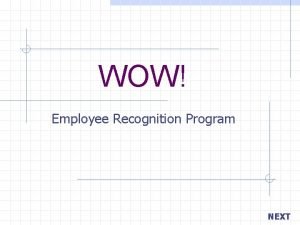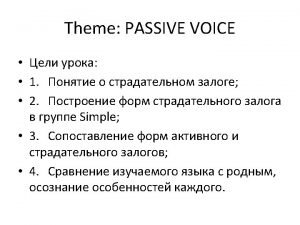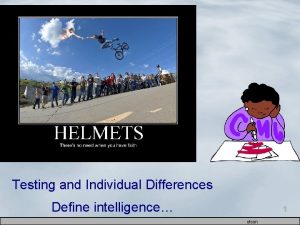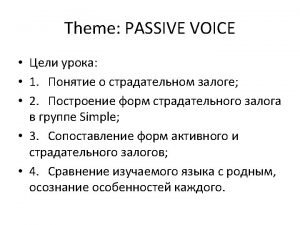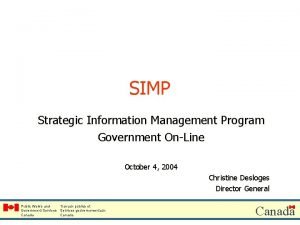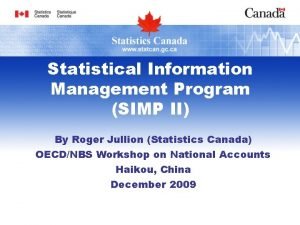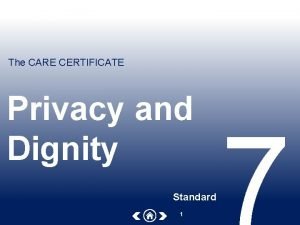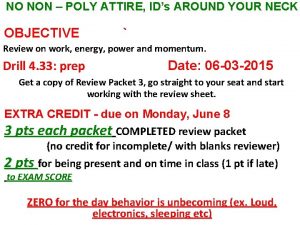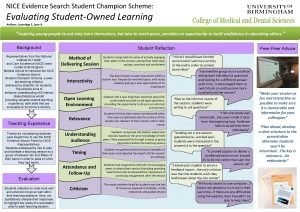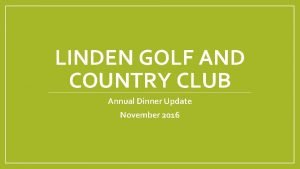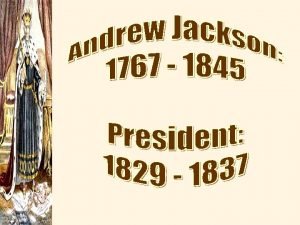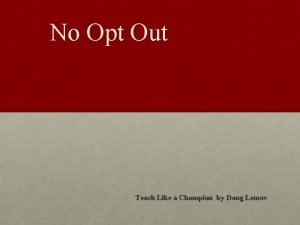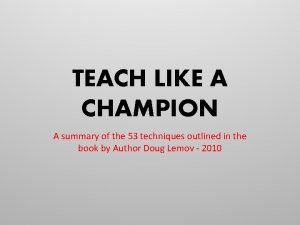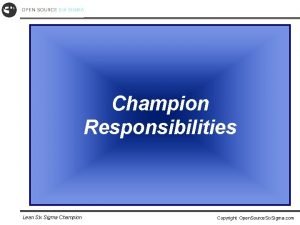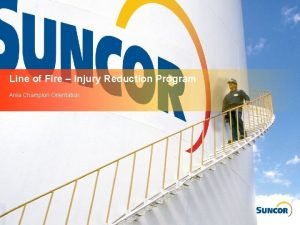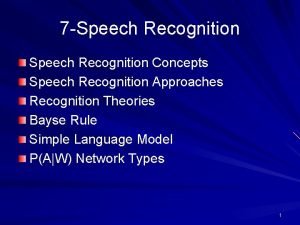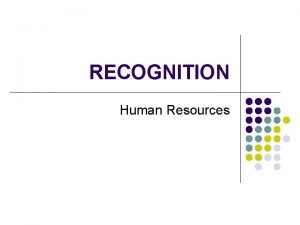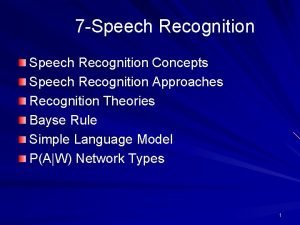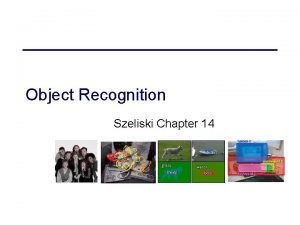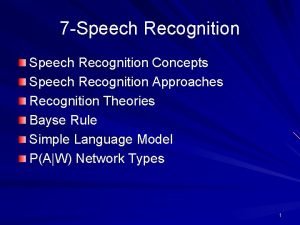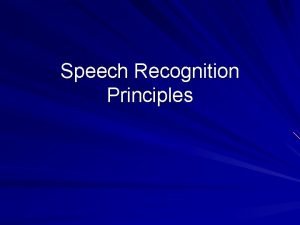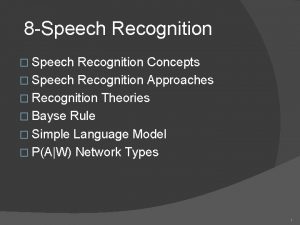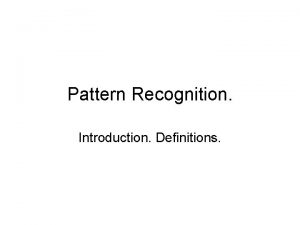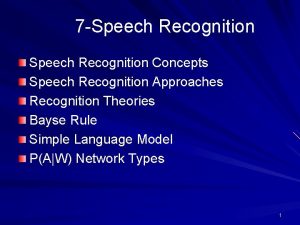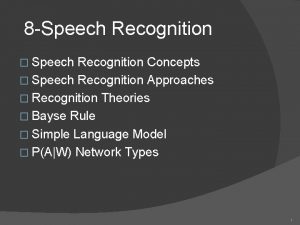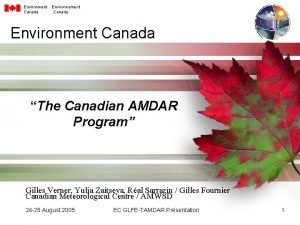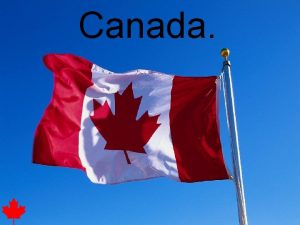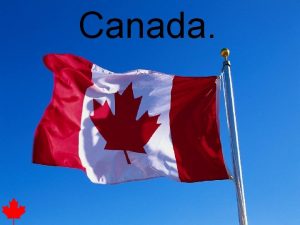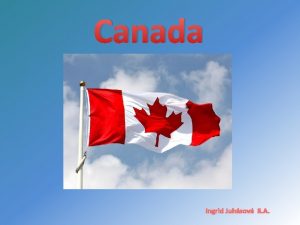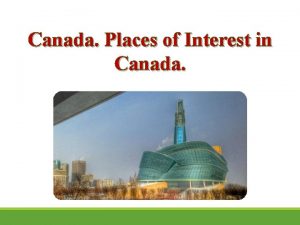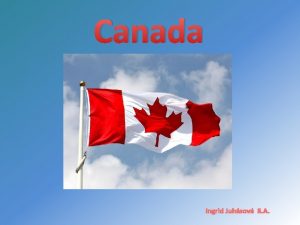Fire Smart Canada Community Recognition Program Community Champion






























- Slides: 30

Fire. Smart Canada Community Recognition Program Community Champion Workshop Module 1 Workshop Introduction WUI Issues

Workshop Purpose and Objectives Provide Community Champions – neighbourhood leaders – with the information and tools required to gather and motivate your neighbours to work with local fire agency staff to make your neighbourhood less vulnerable to wildfire. A B A. Edgepark Circle B. 200 Block - Forest Avenue Text Ref: Slide 1 - 2

Workshop Organization Modules 1. Introduction – WUI Issues 2. WUI Hazard Assessments + Fire. Smart Solutions 3. Overview of the FCCRP 4. Implementing Solutions – Applying for Recognition 5. Workshop Review and Wrap-up Text Ref: Slide 1 - 3

Learning Objectives Module 1 1. Explain the major issues contributing to WUI fire losses in Canada. 2. Explain some of the key realities and myths about wildfire in the WUI 3. Describe the WUI disaster cycle and lessons learned from wildfire disasters. 4. Understand the mechanisms of structural ignitions. Text Ref: Slide 1 - 4

Our Neighbourhoods are at Risk from Wildfire • Wildfire is a threat to our community and its neighbourhoods. • This threat cannot be solved by firefighters or more equipment. • Solving the problem depends on what happens BEFORE the fire, in our own BACKYARDS! Text Ref: Slide 1 - 5

The Wildland/Urban Interface (WUI)…. What is the WUI? Structures in locations where conditions result in the potential for their ignition from flames and firebrands of a wildland fire. Where is the WUI? Text Ref: WUI Slide 1 - 6

What is a WUI Fire? Where the fuel being consumed by a wildfire… …changes from wildland fuel to urban fuel… Structural ignition occurs when wildfire embers or flames kindle vulnerable parts of a structure. Text Ref: Slide 1 - 7

What is the Problem? Climate Change -increased area burned / fire intensity Increasing Development in WUI Areas Lack of Fire. Smart mitigations Response Frequently Overwhelmed Forest health issues WUI Disaster -rising fuel loads Evacuation Text Ref: Lo$$es Slide 2 - 8

The Wildfire Disaster Cycle How do wildland/urban fire losses occur? Slave Lake, AB May 21, 2011 Text Ref: Slide 1 - 9

Severe Fire Conditions Fuel, Weather, and Topography Overwhelmed Fire Suppression Too much fire and too few resources Wildland Fire Urban Fire Rapid fire spread and/or High intensity Multiple, simultaneous ignitions Reduced Fire Protection DISASTER! Lack of resources leads to reduced effectiveness Text Ref: GRAPHIC MODIFIED WITH PERMISSION, NFPA WILDLAND FIRE OPERATIONS DIVISION Many homes totally destroyed Slide 1 - 10

Lessons learned*? During severe WUI fires hundreds of structures an hour may be ignited. *Lessons Learned courtesy Structure Survival Research courtesy Jack Cohen - USFS Text Ref: Kelowna BC, 2003 Slide 1 - 11

Lessons Learned? No fire suppression system in the world can stop losses from large conflagrations…. …and more fire trucks are NOT the answer. Text Ref: Slide 1 - 12

Lessons learned? -Total destruction is the rule… Rare for partial home losses to occur… Text Ref: Slide 1 - 13

Lessons learned? -85 to 90% of homes without flammable roofs and 10 metres of clearance will survive a major wildfire*. (*Research from multiple fires in USA/Australia). Text Ref: Slide 1 - 14

Lessons learned? -More than 50% of homes destroyed by wildfires are ignited by embers. Text Ref: Slide 1 - 15

Lessons learned? Home ignitions not always due to adjacent high intensity wildland fire. e. g. the fire did not necessarily spread through vegetation to ignite homes. Text Ref: Slide 1 - 16

Lessons learned? “Miracle House” Laguna Beach, CA, 1993 Text Ref: Slide 1 - 17

Lessons learned? “Miracle Trees” Laguna Beach, CA, 1993 Text Ref: Slide 1 - 18

Time to Refocus our Efforts -Focus on… reducing losses BEFORE the fire starts. -Reduce fire intensity as influenced by the surrounding vegetation. -Reducing ignitability of the structure. Text Ref: Slide 1 - 19

NEW PERSPECTIVE: BREAK THE WUI DISASTER CYCLE Severe Fire Conditions Fuel, Weather, and Topography Wildland Fire Urban Fire Rapid fire spread and/or High intensity Multiple, simultaneous ignitions Stopping the transition of fire from “wildland” fuels to “built” fuels significantly reduces the likelihood of a disaster. GRAPHIC MODIFIED WITH PERMISSION, NFPA WILDLAND FIRE OPERATIONS DIVISION Text Ref: Slide 1 - 20

The Ignition Zone Structure + Priority Zones Home Ignition Zone 1 0 0 PZ Zone 3 1 0 0 m PZ Zone 2 Structure & PZ Zone 1 Structural Fuel Modification Wildland Fuel Modification m PZ Zone 2 PZ Zone 3 Wildland Fuel Modification Ignition Potential is determined by characteristics of structure and surrounding flammable materials Text Ref: GRAPHIC MODIFIED WITH PERMISSION, NFPA WILDLAND FIRE OPERATIONS DIVISION Slide 1 - 21

Workshop Exercise #1 -1: Wildfire! Preventing Home Ignitions* 19 minutes. * Courtesy of Firewise Communities/NFPA Record key messages in your Student Workbook Provide a 3 line summary of findings Objective: Acquaint CC’s with key concepts related to preventing WUI structure ignitions. Text Ref: Slide 1 - 22

Workshop Exercise #1 -1: Video Discussion: -What are some key structure ignition issues that are highlighted in the Wildfire - Preventing Home Ignitions video (aka ‘Jack Cohen video’)? Text Ref: Slide 1 - 23

Structural Ignition Question How close do flames and firebrands have to be for a wildfire to ignite a flammable structure? Text Ref: Slide 1 - 24

Structural Ignition Research helps us: -understand heat transfer in the WUI. -confirm or develop guidelines for mitigating the risk of ignition. Text Ref: Slide 1 - 25

Key Observations -Walls rarely ignite from radiation -Walls often self extinguish as fire passes. Text Ref: Slide 1 - 26

Key Observations -Firebrands don’t ignite vertical walls -Accumulations of firebrands at wall/floor junction will ignite the wall. Text Ref: Slide 1 - 27

Key Observations Vinyl siding: -does not ignite due to radiation; -burns fiercely when contacted by flame - (convection). Text Ref: Slide 1 - 28

Key Observations -Asphalt/composition roofing does not ignite (with flaming debris on it. ) Text Ref: Slide 1 - 29

Workshop Exercise #1 -2: NWT Experimental Crown Fire Video 1. View this video and jot down key points in your Manual. 2. Offer your key points to the class for discussion. Objective: Acquaint CC’s with structure survival research findings and resulting Fire. Smart mitigations. Text Ref: Slide 1 - 30
 Wow cards for employees
Wow cards for employees Street knowledge vs book knowledge
Street knowledge vs book knowledge Smart two men are
Smart two men are It's not how smart you are
It's not how smart you are Future smart ways to pay answers
Future smart ways to pay answers It's not how smart you are
It's not how smart you are What is the next letter? a z b y c x d
What is the next letter? a z b y c x d Street smart vs book smart quotes
Street smart vs book smart quotes One smart man he felt smart
One smart man he felt smart Reichstag fire who was the fire starter
Reichstag fire who was the fire starter Canvas connection hvac
Canvas connection hvac Uttar pradesh fire prevention & fire safety rules, 2005
Uttar pradesh fire prevention & fire safety rules, 2005 Rwi are
Rwi are Extinguisher parts
Extinguisher parts Simp program canada
Simp program canada Simp;ii
Simp;ii Care certificate privacy and dignity answers
Care certificate privacy and dignity answers Which excerpt from fish cheeks uses figurative language
Which excerpt from fish cheeks uses figurative language Project champion example
Project champion example Brutus a champion weightlifter raises
Brutus a champion weightlifter raises Nice student champion
Nice student champion Club champion financing
Club champion financing Rizal's salute to luna and hidalgo
Rizal's salute to luna and hidalgo Estrategias de cobranza efectiva
Estrategias de cobranza efectiva Champion of the common man
Champion of the common man Helen champion
Helen champion Change champion network
Change champion network Champion of the common man
Champion of the common man Stretch it teach like a champion
Stretch it teach like a champion Campus champion
Campus champion Teach like a champion summary
Teach like a champion summary
